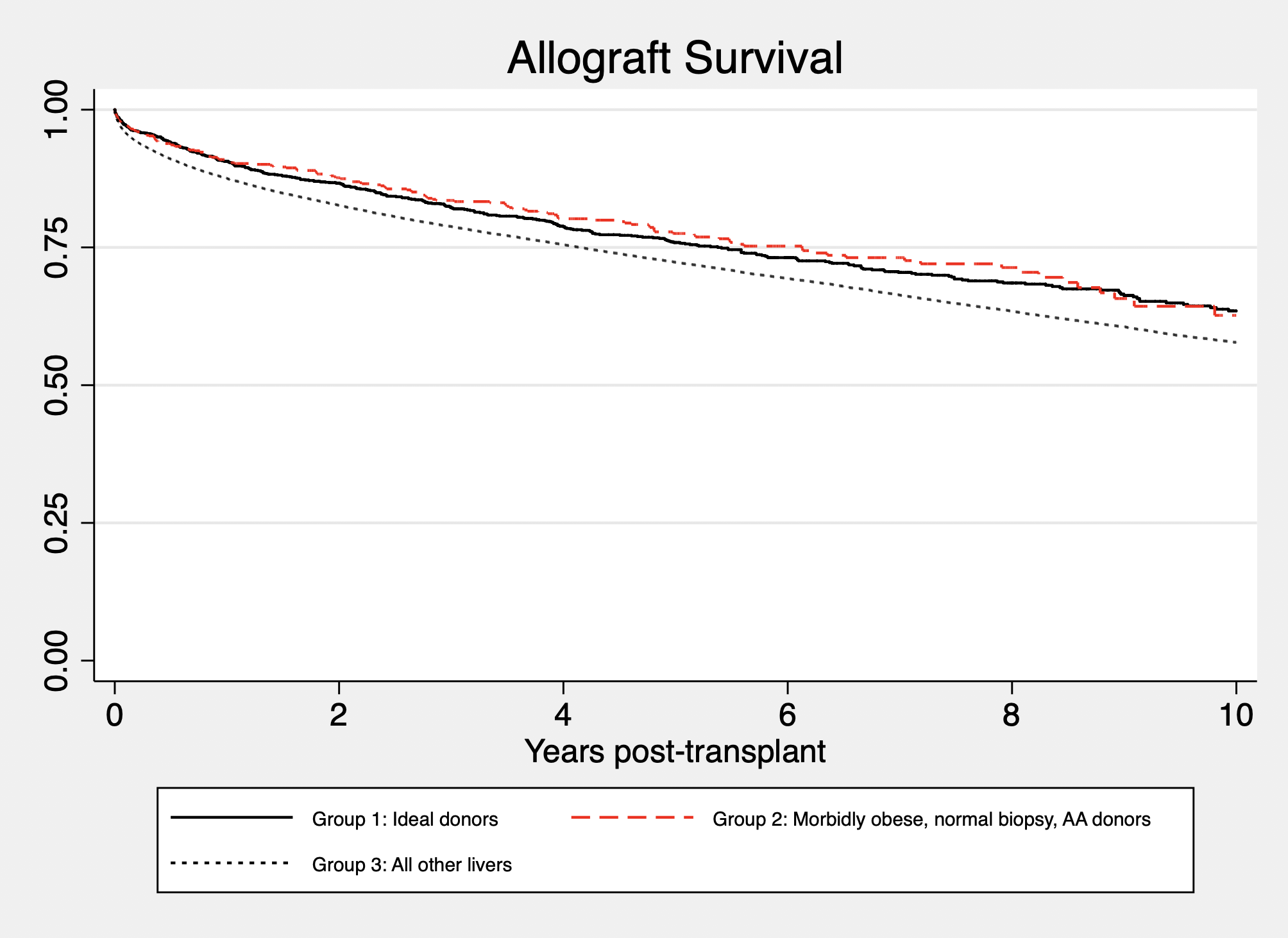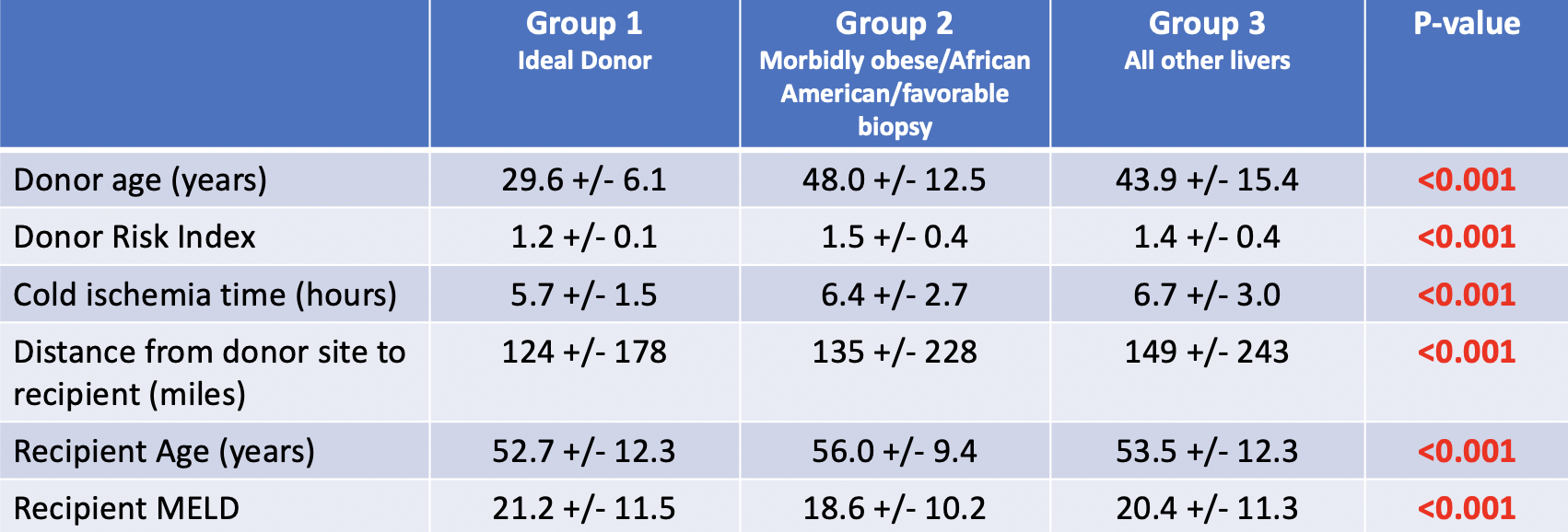Absence of Non Alcoholic Fatty Liver Disease in Allografts from Morbidly Obese Donors: A Marker for Success?
Surgery (Division of Surgical Transplantation), UT Southwestern, Dallas, TX
Meeting: 2019 American Transplant Congress
Abstract number: B77
Keywords: Biopsy, Donors, marginal, Graft survival
Session Information
Session Name: Poster Session B: Biomarkers, Immune Monitoring and Outcomes
Session Type: Poster Session
Date: Sunday, June 2, 2019
Session Time: 6:00pm-7:00pm
 Presentation Time: 6:00pm-7:00pm
Presentation Time: 6:00pm-7:00pm
Location: Hall C & D
*Purpose: Livers from African-American, morbidly obese donors are less likely to be discarded. We examined the utility of pre-recovery liver biopsy as a predictive biomarker of allograft outcomes in this cohort of potential donors.
*Methods: Using the Scientific Registry of Transplant Recipients (SRTR) database, all adult deceased donors from 2004 to 2018 with pre-recovery biopsies were identified. Morbid obesity (BMI>35), macrosteatosis and donor risk index (DRI) was determined. Marginal factors were defined as age >60year, donation after cardiac death (DCD), terminal transaminases >500 u/L, hepatitis B (HBV) core antibody positive, hepatitis C (HCV) antibody positive, and cold storage time >8 hours. Livers were grouped into 3 groups: (1) “ideal donor” defined as 18-40 years, pre-recovery liver biopsy with macrosteatosis <5%, without any marginal factors (2) Morbidly obese African-American donors with liver biopsy <5% macrosteatosis; and (3) all other liver donors. Donor and recipient demographic data were examined, and survival and outcomes calculated. p-value of <0.05 was considered significant.
*Results: Morbidly obese African-American donors (Group 2) were the oldest (48.0 years), with highest DRI (1.47), highest BMI (42.1), (Table 1). Cold ischemia time was longer (6.4 hours, p<0.001) and distance travelled to donor site(135 miles, p<0.001) when compared to the ideal donor (Group 1). Additionally, recipients of group 2 donors were oldest (56.0 years, p<0.001). MELD scores were lower in Group 2 (19 v 21 and 20, p<0.001). Allograft survival in Group 2 was similar to that of the ideal group (p=0.6) and significantly better than all other livers (Group 3, p<0.001) (Fig 1). Five-year survival was 78% in Group 2 compared with 76% and 72% in Groups 1 and 3.
*Conclusions: Normal biopsy findings (< 5% macrosteatosis) in morbidly obese African-American donors appear to represent a marker of allografts that display excellent long-term outcomes. Interestingly, this is seen regardless of unfavorable donor and recipient risk factors. These livers should be aggressively pursued for clinical use and warrant additional study to explain the underlying biological advantage they appear to contain.
To cite this abstract in AMA style:
MacConmara M, Mufti A, Hanish S, Kerr T, Vagefi P, Hwang C. Absence of Non Alcoholic Fatty Liver Disease in Allografts from Morbidly Obese Donors: A Marker for Success? [abstract]. Am J Transplant. 2019; 19 (suppl 3). https://atcmeetingabstracts.com/abstract/absence-of-non-alcoholic-fatty-liver-disease-in-allografts-from-morbidly-obese-donors-a-marker-for-success/. Accessed December 18, 2025.« Back to 2019 American Transplant Congress


